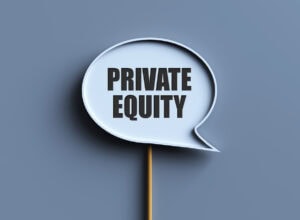For organizations seeking to strengthen their leadership pipelines, it is important to zero in on how to quickly and accurately identify people with the potential to fit the leadership profile that you’ve identified. Drew Seaman, managing director of Hunt Scanlon Ventures, takes an inside look with Korn Ferry vice chair Jane Stevenson.
Hiring from within can often manifest itself in stagnant, slow growth environments. What PE operating partners have figured out is that talent – especially at the top of an organization – is the critical value creation lever. In case after case, that talent is injected from the outside.
“When you need fresh insights, new approaches and a clear-eyed look at the business through a wider lens, nothing beats an outside C-suite leader coming in to shake things up,” said Drew Seaman, managing director of Hunt Scanlon Ventures. “Outsiders bring different perspectives, innovative ideas, and often breathe new life, and more value, into companies.”
But according to Jane Stevenson, vice chair, board and CEO services at Korn Ferry, your future CFO, CMO or CTO could already be at your company. No need to rush outside for that next great leader. Building a robust talent pipeline does not come by accident, she says. Instead, she notes, “it is created through a thoughtful, intentional process requiring buy-in at all levels of leadership.”
Seven Essentials
Turning these homegrown, talented individuals into your next group of C-suite leaders is a long-term investment that some organizations find difficult to fulfill. Which is why many turn to external leaders in times of crisis or simply when the need arises.
“Leadership development is rarely a day-to-day priority,” says Ms. Stevenson. “It ends up on the back burner until there’s a succession crisis.”
But if you want to ensure a great C-suite pipeline, you need to connect the dots to identify, cultivate and incubate talent, she says.“It’s easy to say this is an objective but much harder to make it happen.”
“If you want to ensure a great C-suite pipeline, you need to connect the dots to identify, cultivate and incubate talent. It’s easy to say this is an objective but much harder to make it happen.”
Here, Ms. Stevenson runs through seven essentials to building a successful C-suite leadership pipeline:
1. Design Your Ideal Leadership Profile
What qualities do your future C-suite leaders need to have? Start by considering how you define success and failure at your organization, says Ms. Stevenson. “Then use this to think about your ideal leader and the types of characteristics they have,” she notes.
To help identify these traits, look at both your current C-suite members and other senior leaders to understand the competencies and experience they have to ensure they will deliver on your business agenda.
2. Identify Highest Potentials
For organizations seeking to strengthen their leadership pipeline, it is important to zero in on how to quickly and accurately identify people with the potential to fit the leadership profile that you’ve identified.
How can you do this successfully? We know that solely relying on performance or gut instinct can lead to many talented people being overlooked. Having objective assessment criteria is essential for identifying high performers who lack the traditional network at the top and would otherwise be left out of the talent pipeline.

In her role as vice chair of Korn Ferry, Jane Stevenson works across the global governance continuum on behalf of clients and has served as a pioneer in developing the firm’s succession capabilities at the board and CEO level. She additionally serves as executive sponsor for the firm’s Power of ALL initiative, focused on developing diverse talent in the world’s top leadership pipelines.
3. Consider Readiness vs. Potential
When assessing people for suitability as future C-suite candidates, it is important to distinguish between determining potential – those who have the key capabilities or attributes, but who may need additional experiences – and evaluating readiness – those who could step into the C-suite role immediately if necessary.
“People who are more than two years away from a C-suite appointment should be assessed for their potential to grow into the job. Given sufficient time, those with significant potential, who are viewed as serious contenders, can build needed skills and experiences in conjunction with a development program tailored to building and augmenting the areas that need strengthening,” says Ms. Stevenson.
4. Design Leader Development Opportunities
Success comes from both “inside-out” and “outside-in” development. Inside-out focuses on a person’s traits and motivations, helping people clarify their goals and gain insight into how their beliefs and values drive their behaviors. Outside-in centers on organizational goals, which help current and future leaders better understand how their organization defines success and how others perceive them.
Connect these two perspectives to help people perform and transform at personal, interpersonal and organizational levels, says Ms. Stevenson.
5. Identify Credibility-Building Roles
Every company has “make or break” positions that are seen as key milestones. The challenges faced, achievements made, and lessons learned in these roles can earn credibility and springboard individuals forward in their career progression.
Of course, the reverse can also be true. But as long as less successful individuals have the support they need to succeed in their role, this can help companies weed out those that might not be suited to the top jobs.
“Giving people exposure and experience outside of their comfort zones provides a broader perspective and helps these future leaders stretch. Ensuring a clearly defined pathway to these credibility-building roles is essential to building a more inclusive and diverse leadership pipeline.”
“Giving people exposure and experience outside of their comfort zones provides a broader perspective and helps these future leaders stretch,” says Stevenson. “Ensuring a clearly defined pathway to these credibility-building roles is essential to building a more inclusive and diverse leadership pipeline.”
6. Strengthen Your Feedback Loop
After an assessment or any performance review, ensure your high potentials and future leaders know where they stand, what’s valued about them, what they’re working on, and that they are working towards a shared purpose. Communicate promotion pathways and follow through with challenge assignments, skill development and leadership training.
“Getting the feedback loop right minimizes the flight risk for top talent and ensures these future leaders are highly engaged and motivated,” says Stevenson. Communication and transparency are paramount, she says, and CHROs can play a vital role here, setting the tone for openness and proactively ensuring the feedback loop is working.
7. Integrate Leader Development Into Company Culture
As executives and managers bounce from one urgent issue to the next, there’s little time to think about how and when succession gaps will appear.
To address this challenge, weave leader development into your company culture. “CHRO and C-suite leaders can make this a company priority by setting aside time in daily or weekly schedules,” says Ms. Stevenson. “This cascades down, energizing people who want to be part of this culture and reducing the risk of talent loss.”
Article By

Drew Seaman
Drew Seaman is a Managing Director at Hunt Scanlon Ventures. He is responsible for co-managing the firm’s investment portfolio of executive search, talent acquisition, private equity, and investment firms. In addition to sourcing new opportunities and managing the firm’s current investments, Drew leads the technical aspects of client engagements, including valuation and financial analysis and the preparation of investment marketing materials.
Drew began his career in wealth management before joining BMO Capital Markets as an Investment Banking Associate in the Financial Institutions Group. Drew assisted with transaction execution and prepared comprehensive valuation and financial analyses for clients in the specialty finance, asset and wealth management, and insurance sectors.
Drew earned a B.A. in Economics from DePauw University, where he was quarterback on the varsity football team. He earned his M.B.A. with concentrations in Finance and Accounting from NYU’s Stern School of Business. Connect with Drew.






